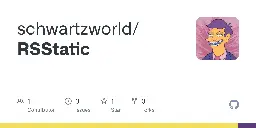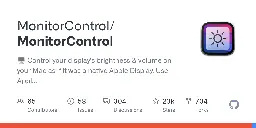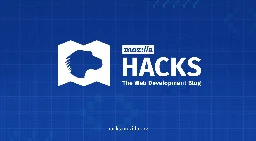POST: Don't Use Frameworks vs A New Framework Every Week
As a frontend developer, I primarily use JavaScript. It's the language I know best, although I've dabbled in others. Anybody who spends enough time hanging around The Orange Site will hear the same two tropes about JavaScript repeated over and over again.
- JavaScript frameworks (especially React) are bad, because they are too heavy. Just build HTML sites with a little JS for interactivity!
- The JavaScript ecosystem is bad because there is a new framework every week!
I can't argue that React isn't heavy, because it definitely is. When building smaller personal projects, I challenge myself to avoid using a framework, and this is totally fine for a project that I plan on finishing in a weekend. I can be virtually guaranteed that my dependency-free vanilla JS™ will run just fine without maintenance until the internet stops being built out of HTML and JavaScript.
I do take umbrage with the second point. There have essentially only been 3 actual players for several years: React, Angular, Vue. Ember is also used professionally, but less so.
Part of why this issue is so muddy is because of the two kinds of a front-end developer. The internet used to be made out of documents, and some of those documents had a little interactivity. This is the first type of developer, a person who has never had a problem just listening for a click on a DOM element and calling a function. These are usually the loudest voices against frameworks.
What these voices often fail to recognize is that their sites involve updating the DOM in a handful of places, and this is a fundamentally different thing than a full-featured SPA with lots of routes. They don't need to reuse logic in different parts of the app the way React encourages. Yeah, man. I wouldn't use React just to put an image carousel on a webpage either.
Any effort to create a complex single-page application without a framework is likely either going to be messy as hell or result in a unique framework. And that unique framework might be something you are proud of and decide to show the world, and there's trope #2 staring you right in the face.
This is without even taking into account the other benefits that come from learning a popular framework. Startup jobs (with startup money) are plentiful and most of them use popular technologies. That's part of the fun of working at a startup. If you want to break into that sector, your chances are greatly improved by knowing a modern framework, especially React. When I took my current job, onboarding was significantly shorter because they were using the same tooling that we used at my previous job. It's better for the company, but it's also better for me. I get to make more money and have an easier time at work. Cool.
So how does one navigate the quagmire of "a new framework every week"? The big three took center stage because their approaches were radically different than the old jQuery way. You should know enough about their differences to be able to talk intelligently about them (which is where a lot of projects that "don't need a framework" come from, but that's another post). When a new framework comes along, you'll be able to tell right away, does this represent a new paradigm or is it just more of the same? If it seems different enough to mess around with, mess around with it if you have time. If it does end up becoming the next big thing, you're an early adopter, and if not, there may be ideas or patterns that improve the code you write every day.
POST: Introducing RSStatic, a Lemmy-powered static site generator
Contribute to schwartzworld/RSStatic development by creating an account on GitHub.

This is the first of hopefully many posts on the idea of using federated social media as a backend. Blogging is hard. Social media posting is easy. So maybe the blog can be built from the social media?
Think about it, you get so much out of the box using someone else's site as your CMS. Lemmy takes markdown, and turns it into server-generated HTML which it serves up via RSS. It includes comments, and when Lemmy federates, those comments could come from members of any other Lemmy instance, offering users a low-overhead to commenting. Lemmy even includes image hosting!
!An image hosted on dev.lemmy.ml
It's currently running in a very barebones manner at https://festive-euclid-26b79e.netlify.app/
LINK: The Frink is Good, the Unit is Evil • Hillel Wayne
One day Alan Eliasen read a fart joke and got so mad he invented a programming language. 20 years later Frink is one of the best special purpose languages for dealing with units. “But why do we need a language just for dealing with units?” Glad you asked! Intro to Units A unit is the physical proper...
POST: Introducing RSStatic, a Lemmy-powered static site generator
Contribute to schwartzworld/RSStatic development by creating an account on GitHub.

This is the first of hopefully many posts on the idea of using federated social media as a backend. Blogging is hard. Social media posting is easy. So maybe the blog can be built from the social media?
Think about it, you get so much out of the box using someone else's site as your CMS. Lemmy takes markdown, and turns it into server-generated HTML which it serves up via RSS. It includes comments, and when Lemmy federates, those comments could come from members of any other Lemmy instance, offering users a low-overhead to commenting. Lemmy even includes image hosting!
!An image hosted on dev.lemmy.ml
It's currently running in a very barebones manner at https://festive-euclid-26b79e.netlify.app/
POST: The Last Good Device I Ever Bought
In the late 2000s I didn't have a smartphone yet. Most of us didn't. My first smartphone was an iPhone 3 back in the days when Apple was still making good products. It was obvious even then that phones would replace 'unitaskers'. While that has been an obvious benefit in some ways, it has actively made certain things worse.
The last really good device I ever bought was a Flip Video camera. It is better at what it does in most respects than a smartphone, and while it does have some limitations, in some ways those limitations are benefits. And while you can buy unitasking video cameras today, most don't offer the same benefits as the Flip.
Replaceable Batteries: We all have them at home. Rechargables are cheap enough to have a large supply at home, and you can buy disposable batteries anywhere if you run out while on the go. At the time, this didn't seem like a big deal, but here, 15 years later, it's a very big deal.
The problem with non-replaceable rechargable batteries is that they have a limited lifespan. It's hard to imagine any modern device still turning on after a decade in a cupboard, but with a fresh set of AAs, my Flip did exactly that.
It's Dumb: Any device that requires a server somewhere or an app on your phone to operate is almost certainly collecting your data, but more than that, it stops working when those servers shut down. If Google stops supporting Google Home, your Google Home stops working. If Wyze closes, maybe your Wyze Cam still works, but without updates, the App will eventually stop being supported.
Flip stores your videos in .mp4 format. These are widely supported today. It allows you to transfer those files directly to your computer over USB without any proprietary software, or even a cable. You just pop out the male USB connector that gives the device its name and plug it in, at which point your computer recognizes it like any other USB drive. There's no need to worry that your network is going to get hacked or your data compromised through the device because it has no access to the internet.
Limited Storage: I use an Android phone, which comes with Google Photos integrated on the device. My pictures and videos are automatically backed up to the cloud, and the phone notifies me that they've been stored and I can clear them from local storage with a single button click. It's a tremendous convenience that almost certainly comes at a price of having every single bit of data about me and my children collected.
But privacy aside, the unexpected consequence of seamless unlimited storage in the cloud is that photos and videos disappear into the ether. I have so many pictures of my kids that the idea of going through them and printing some out is overwhelming, and if I don't print them, eventually I'll lose access.
The Flip only stores an hour of video, which was more than enough for my purposes (recording myself in shows). The upside is that you have to deal with the videos quickly or you won't have space for more. When I used the Flip a lot, transferring the videos to the computer was an obvious time to burn them to a DVD for backup. Now I'd dump them straight away to an external storage drive or upload them to a personal cloud server... Or maybe just burn a DVD.
Well, I know what you're thinking: show us the goods! How do the videos look? This video was recorded in 2009 with my flip. It's not the impeccable quality we get in modern phones, but the audio isn't bad for what it is.
LINK: MonitorControl/MonitorControl
🖥 Control your display's brightness & volume on your Mac as if it was a native Apple Display. Use Apple Keyboard keys or custom shortcuts. Shows the native macOS OSDs. - GitHub - MonitorCon...

LINK: A Crash Course in JIT compilers
This is the second part in a series on WebAssembly and what makes it fast. If you haven’t read the others, we recommend starting from the beginning. JavaScript started out ...

I'm fascinated by the idea of creating my own programming language.
LINK: Poker API to calculate winning hand
A simple JSON poker API for calculating the winning hand in a game of Texas holdem.
You mean the podcast "Citations Needed"?
